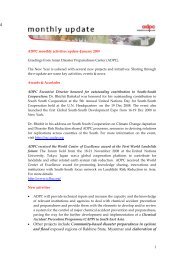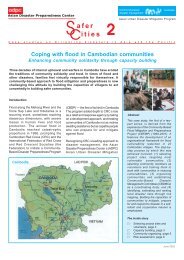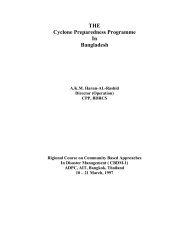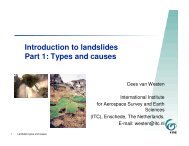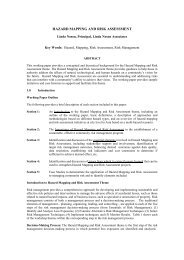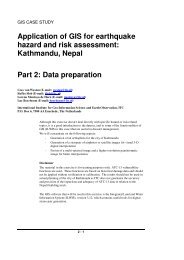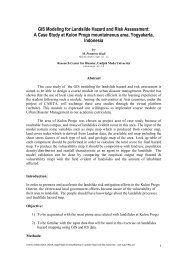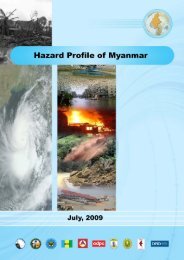community-based disaster risk management and the media media kit
community-based disaster risk management and the media media kit
community-based disaster risk management and the media media kit
You also want an ePaper? Increase the reach of your titles
YUMPU automatically turns print PDFs into web optimized ePapers that Google loves.
introduction<br />
introduction<br />
Every now <strong>and</strong> <strong>the</strong>n <strong>disaster</strong>s cause huge loss of life <strong>and</strong> property <strong>and</strong><br />
<strong>the</strong>y damage <strong>the</strong> environment in <strong>the</strong> countries of South East Asia, e.g.<br />
Cambodia, Timor Léste, Indonesia, Lao PDR <strong>and</strong> Vietnam. Disasters<br />
affect negatively <strong>the</strong> sustainable development in <strong>the</strong> affected societies<br />
<strong>and</strong> countries. Disasters are caused by hazards which impact upon<br />
vulnerable people, infrastructure, assets <strong>and</strong> environment. Some of <strong>the</strong><br />
common hazards experienced in <strong>the</strong> region include typhoons, fl oods,<br />
drought, forest fi res, l<strong>and</strong>slide, earthquakes <strong>and</strong> tsunami. We can avoid<br />
<strong>and</strong> reduce losses from <strong>disaster</strong>s, by ei<strong>the</strong>r mitigating <strong>the</strong> hazards or<br />
reducing <strong>the</strong> vulnerabilities of <strong>the</strong> people living in hazard prone areas.<br />
The process of <strong>disaster</strong> <strong>risk</strong> reduction involves identifi cation of hazards/<br />
vulnerabilities, analyzing <strong>the</strong>ir potential impact, identifying priorities for<br />
<strong>risk</strong> reduction <strong>and</strong> identifi cation <strong>and</strong> implementation of solutions.<br />
In order to reduce <strong>risk</strong>s to <strong>disaster</strong>s everybody needs to get involved.<br />
This includes government departments, scientifi c organizations,<br />
research institutions, NGOs, United Nations agencies, donor agencies,<br />
<strong>the</strong> <strong>media</strong>, <strong>and</strong> <strong>the</strong> private sector. The role of at-<strong>risk</strong> communities <strong>and</strong><br />
groups is most important in reducing <strong>the</strong> <strong>risk</strong>s of <strong>disaster</strong>s. All of <strong>the</strong><br />
above stakeholders have different perceptions about <strong>the</strong> nature of <strong>risk</strong>s,<br />
priorities for <strong>risk</strong> reduction <strong>and</strong> <strong>the</strong> appropriate solutions. Therefore,<br />
1



